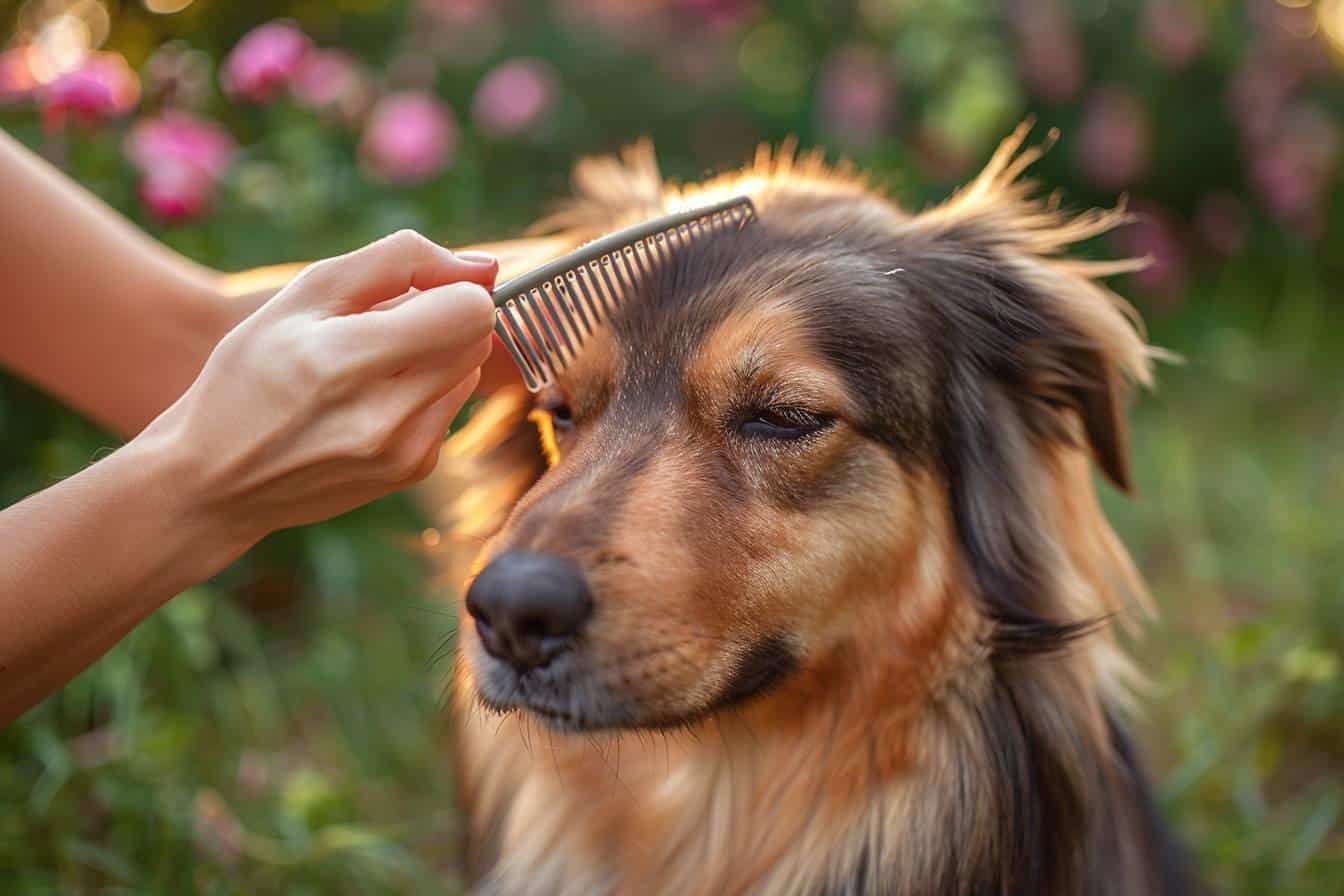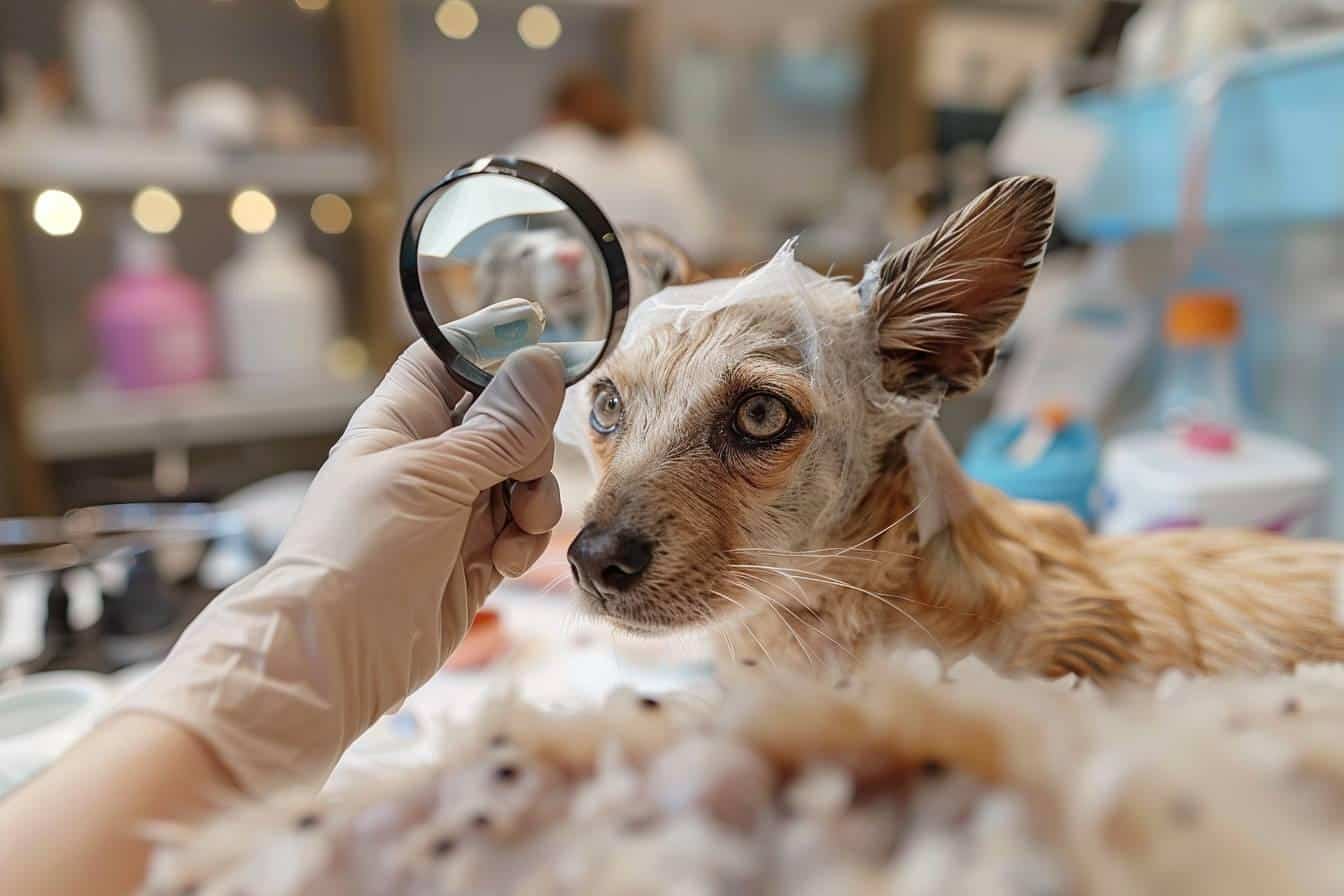Dealing with flea infestations can be a daunting task for pet owners. While adult fleas are visible and easily identifiable, their eggs pose a unique challenge. Dead flea eggs may seem harmless, but they can still cause problems if not properly addressed. This guide will help you identify and safely remove these pesky remnants, ensuring a cleaner and healthier environment for both your pets and your home.
Identifying dead flea eggs
Recognizing expired flea ova is crucial in effectively managing a flea problem. These tiny, oval-shaped particles are often mistaken for dust or dirt, making them easy to overlook. Here’s what you need to know about identifying these minuscule pests :
Appearance : Dead flea eggs typically appear as small, white or off-white specks, roughly the size of a grain of sand. Unlike live eggs, which are pearly white and slightly translucent, non-viable flea eggs may appear dry, shriveled, or discolored.
Location : You’re likely to find these eggs in areas where your pet spends a lot of time, such as :
- Bedding and sleeping areas
- Carpets and rugs
- Upholstered furniture
- Cracks in hardwood floors
- Your pet’s fur
Texture : While live flea eggs are smooth and slightly sticky, lifeless flea ova may feel gritty or powdery to the touch. This change in texture occurs as the egg dries out after death.
To distinguish between live and dead flea eggs, you can perform a simple test. Collect a few suspected eggs on a dark surface and gently blow on them. Live eggs will stick to the surface due to their sticky coating, while dead ones will scatter easily.
Safe removal techniques for dead flea eggs
Once you’ve identified the presence of non-viable flea eggs, it’s essential to remove them promptly and safely. Here are some effective techniques to eliminate these potential hazards from your home and pet :
Vacuuming : Regular and thorough vacuuming is one of the most effective ways to remove dead flea eggs from your home. Focus on areas where your pet frequents, paying special attention to carpets, rugs, and upholstered furniture. Use a vacuum with strong suction and consider using a brush attachment to agitate the fibers and dislodge eggs.
Steam cleaning : For a deeper clean, steam cleaning can be highly effective. The high temperature of the steam not only removes dead eggs but also kills any remaining live ones. This method is particularly useful for carpets, upholstery, and pet bedding.
Washing fabrics : Regularly wash your pet’s bedding, blankets, and any removable fabric covers in hot water (at least 140°F or 60°C) to eliminate dead flea eggs. This temperature ensures that any potentially viable eggs are also destroyed.
Combing your pet : Use a fine-toothed flea comb to remove dead eggs from your pet’s fur. Comb through the fur carefully, paying extra attention to areas where fleas tend to congregate, such as the neck, back, and base of the tail. Dip the comb in a mixture of warm water and dish soap between strokes to remove and drown any eggs or fleas you’ve collected.
| Removal Method | Effectiveness | Frequency |
|---|---|---|
| Vacuuming | High | Daily during infestation, then 2-3 times per week |
| Steam Cleaning | Very High | Once a week during infestation, then monthly |
| Washing Fabrics | High | Weekly |
| Combing Pet | Medium | Daily during infestation, then 2-3 times per week |

Preventing future flea infestations
While removing dead flea eggs is crucial, preventing future infestations is equally important. Implementing a comprehensive prevention strategy will help keep your home and pets flea-free. Consider the following measures :
Regular pet treatments : Use veterinarian-recommended flea prevention products on your pets. These may include topical treatments, oral medications, or flea collars. Consistency is key in maintaining an effective flea prevention routine.
Environmental control : Treat your home and yard with pet-safe flea control products. Pay attention to dark, humid areas where fleas thrive, such as under furniture, in crawl spaces, and in shaded outdoor areas.
Natural repellents : Consider using natural flea repellents as a supplementary measure. Some effective options include :
- Diatomaceous earth (food-grade)
- Cedar oil
- Lemon spray
- Rosemary
- Neem oil
Regular cleaning : Maintain a consistent cleaning schedule, including vacuuming, washing pet bedding, and sanitizing your pet’s living areas. This routine will help prevent flea eggs from accumulating and hatching.
Outdoor management : Keep your lawn trimmed and remove debris where fleas might hide. Consider using nematodes, microscopic worms that feed on flea larvae, as a natural outdoor control method.
Long-term strategies for a flea-free environment
Creating a lasting, flea-free environment requires ongoing effort and vigilance. By implementing these long-term strategies, you can significantly reduce the likelihood of future flea infestations and the presence of expired flea ova :
Education and awareness : Stay informed about flea biology and behavior. Understanding the flea life cycle will help you target your prevention efforts more effectively. Knowledge is power when it comes to pest control.
Regular pet check-ups : Schedule regular veterinary check-ups for your pets. Your vet can provide up-to-date advice on flea prevention and early detection of any potential infestations.
Integrated pest management : Adopt an integrated approach to pest control that combines chemical, biological, and cultural methods. This holistic strategy is more effective and environmentally friendly than relying solely on chemical treatments.
Monitoring and early intervention : Regularly inspect your pets and home for signs of fleas. Early detection allows for quicker and more effective treatment, preventing the problem from escalating.
Seasonal awareness : Be particularly vigilant during peak flea seasons, typically during warm and humid months. Adjust your prevention and cleaning routines accordingly.
By following these guidelines and maintaining a proactive approach, you can effectively manage dead flea eggs and create a healthier environment for both your pets and your family. Remember, consistency and persistence are key in the battle against fleas and their eggs.

